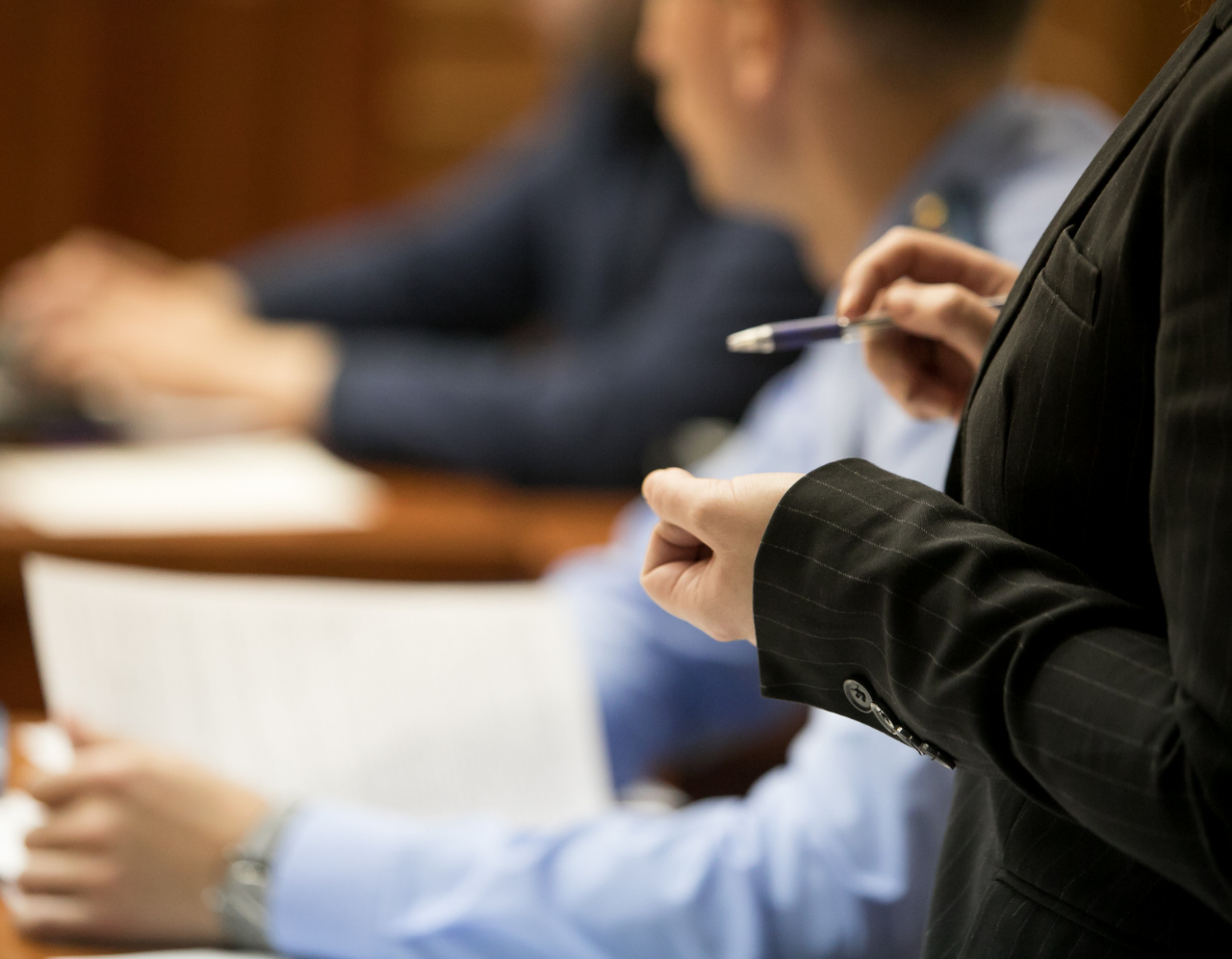Attaining Success in Court Trials: The Importance of Professional Trial Presentations
Attaining Success in Court Trials: The Importance of Professional Trial Presentations
Blog Article
Browsing the Complexities of Trial Presentations: Tips for Seamless Distribution and Engaging Disagreements
In the realm of legal process, the art of test discussion stands as a vital determinant of success. The complexities intrinsic in trial presentations call for a delicate equilibrium of finesse, approach, and skill.

Comprehending Test Goals
To successfully browse a trial, it is crucial to have a clear understanding of the goals that need to be attained. Prior to stepping into the courtroom, lawful teams should define their objectives and preferred end results. These goals work as leading principles throughout the test, shaping methods and affecting decision-making procedures.
Understanding test purposes entails a thorough evaluation of the case, legal precedents, and the client's best rate of interests. Trial Presentations. It requires a careful evaluation of the truths, identifying vital issues, and anticipating possible challenges. By setting details and measurable objectives, attorneys can tailor their presentations and disagreements to straighten with the wanted outcomes
Moreover, a clear understanding of test purposes enables legal teams to focus on proof, witnesses, and legal arguments properly. It allows for the development of a systematic story that resonates with the judge and court, reinforcing the general case discussion.

Organizing Proof Successfully
Having a clear understanding of test goals lays the foundation for organizing proof properly in lawful procedures - Trial Presentations. By aligning the presentation of proof with the preferred results of the trial, lawful groups can strengthen their arguments and boost their persuasiveness. One critical element of organizing evidence is classification. Grouping evidence based upon styles or relevance to details lawful elements can help simplify the presentation and make complex details a lot more digestible for the court or jury.
An additional crucial element in arranging evidence successfully is establishing a rational flow. Providing evidence in a consecutive and coherent way can help develop a compelling narrative that sustains the legal disagreements being made. Additionally, utilizing aesthetic aids such as timelines, graphs, or graphes can additionally enhance the organization of proof and assist in clearing up intricate relationships or sequences of occasions.
Furthermore, guaranteeing that all proof presented is acceptable and appropriate to the situation is crucial. Unimportant or inadmissible proof can interfere with the strength of the disagreement and possibly damage the credibility of today celebration. A careful testimonial and option procedure need to be undertaken to include just the most legally audio and impactful proof in the test discussion.
Crafting Influential Stories
Crafting compelling stories plays an essential role in offering convincing arguments throughout legal process. When building a narrative for a test presentation, it is crucial to establish a clear storyline that highlights crucial points and attaches them in a meaningful fashion. By weaving together proof, statement, and lawful disagreements right into a cohesive and influential narrative, lawful professionals can successfully advocate for their customers and increase the probability of a favorable end result in the courtroom.
Grasping Aesthetic Aids
Reliable use of visual help is key to improving the influence and clarity of trial discussions. Visual aids, when used purposefully, have the power to streamline complex info, enhance bottom lines, and leave a long-term impression on the discretionary. To understand visual aids in trial discussions, it is critical to guarantee that they are clear, concise, and pertinent to the debates being made.
When incorporating visual aids, such as graphes, pictures, timelines, or charts, into a trial presentation, it is important to keep them aesthetically appealing yet expert. The visuals need to enhance the spoken debates, providing a visual representation of the information being discussed without overwhelming the audience with unnecessary details.
Moreover, practicing with the visual help ahead of time is vital to make sure a smooth shipment during the trial. Familiarizing oneself with the content, transitions, and timings of each aesthetic help can assist preserve the flow of the presentation and prevent technical problems that might develop.
Providing Impactful Closing Disagreements
A compelling closing debate serves as the end result of a trial discussion, encapsulating the core story and convincing the court and jury in the direction of a beneficial choice. Begin by describing the major disagreements that sustain your client's placement, emphasizing why the proof presented throughout the trial sustains your narrative.
Additionally, including emotional appeal can better strengthen your closing disagreement. Inevitably, a well-crafted closing argument must you can try here leave an enduring impact, compelling the judge and jury to rule in your client's favor.
Conclusion
In final thought, grasping test discussions includes recognizing purposes, arranging proof, crafting stories, making use of aesthetic help, and providing impactful closing disagreements. By applying these approaches properly, legal representatives can offer their instance flawlessly and make engaging disagreements in the court. It is vital to browse the complexities of trial presentations with accuracy go and ability to accomplish success in legal proceedings.
By aligning the discussion of proof with the i thought about this preferred results of the trial, legal groups can enhance their disagreements and enhance their persuasiveness (Trial Presentations). To master aesthetic help in trial presentations, it is critical to make certain that they are clear, succinct, and relevant to the arguments being made
An engaging closing disagreement serves as the culmination of a test presentation, encapsulating the core story and convincing the judge and court towards a favorable choice. Begin by describing the main debates that support your client's placement, highlighting why the proof provided throughout the trial sustains your narrative.In verdict, grasping trial discussions involves recognizing goals, arranging evidence, crafting stories, using visual help, and delivering impactful closing disagreements.
Report this page